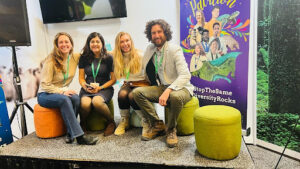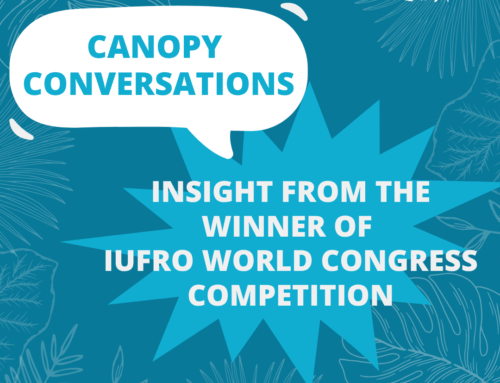Youth Prospects on biodiversity conservation across the Globe

Image: The panelist and attendees during the IFSA side event.
It is a known fact that about half of all known species now are threatened with extinction along with the ecosystems they inhabit. This loss of biodiversity impairs ecosystem function but, more importantly, directly affects people and livelihoods.
During CoP15 in Montreal, IFSA hosted eight youth-led organizations from across the globe directly involved in wildlife conservation to share experiences, network, and learn from each other. Francis Boafo Asamoah, Head of the UNCBD Sub-Commission, helped organize and coordinate the event virtually. At the same time, Kamana Poudel (Regional Representative of North America) moderated the event at the COP15 with the support of IFSA ULaval delegates for the event. It was a panel discussion event where leaders from 8 youth-led organizations, Camari Divuniwaqa from Pacific Island Youth, Abi Gardner from NatureScot – Scotland’s Nature Agency, Melissa Hernandez from CamBIO Eco Collectivo, Columba Michael Ogundele from Tour du Valat, Olusegun Michael Ogundele from Global Youth Biodiversity Network, Sakshi Krishna from Youth for Our Planet, Paul Mukhin from MAB Youth and Niklas Weins from Young Ecosystem Services Specialists participated in the event as a panelist. Each leader from these youth-led organizations provided ideas on the recent conservation initiatives of their organizations. In addition, they also provided their personal views on their conservation journey and why the conservation of biodiversity matters.
At the event, we provided an avenue for youth to meet, learn, collaborate on joint projects, and directly impact decision-making at the regional and global levels. The event brought together youth leaders, policymakers, and early-career scientists from diverse cultural backgrounds and parts of the world. This type of networking is important for integrating diverse perspectives, which helps to understand and achieve the post-2020 biodiversity framework objectives and SDG. It shows a strong sense of solidarity within future generations of humanity and towards our environment, flora, and fauna. This has reignited hope that with positive partnerships and a clear vision, humans and other forms of creation can live together in harmony.

Image: Panelists sharing their thoughts, Kamana Poudel, IFSA Regional Representative of North America, moderating the event, and attendees listening patiently to the panelist
From the Caribbean Islands, through the Brazilian Amazon, to the Sahara and Madagascar, and from the Mediterranean Basin to the Himalayas down to Australia, youth over the world are taking action to halt the destruction of biodiversity. Still, activities are very scattered and collaboration among young people working on biodiversity and wildlife conservation remains low. Access to funding for wildlife research is a challenge for young wildlife scientists, and communication of scientific findings is limited.
A CoP15 parties pledge that by 2050, all species’ extinction rate and risk will be drastically reduced. Governments further pledged youth inclusion in national biodiversity policy presentations. We want to reiterate young people’s critical role in wildlife conservation and emphasize how creating strategic partnerships with youth will help achieve the 2050 goal of living in harmony with the rest of biodiversity.

Image: Delegates for the COP- 15 representing IFSA North America
Wildlife conservation requires intergenerational collaborations and partnerships. Successful collaborations are also essential to reducing wildlife-related crimes, including indigenous communities. We can mobilize domestic and international resources and promote knowledge sharing and cooperation for access to information.
Authors: Francis Boafo Asamoah and Kamana Poudel
